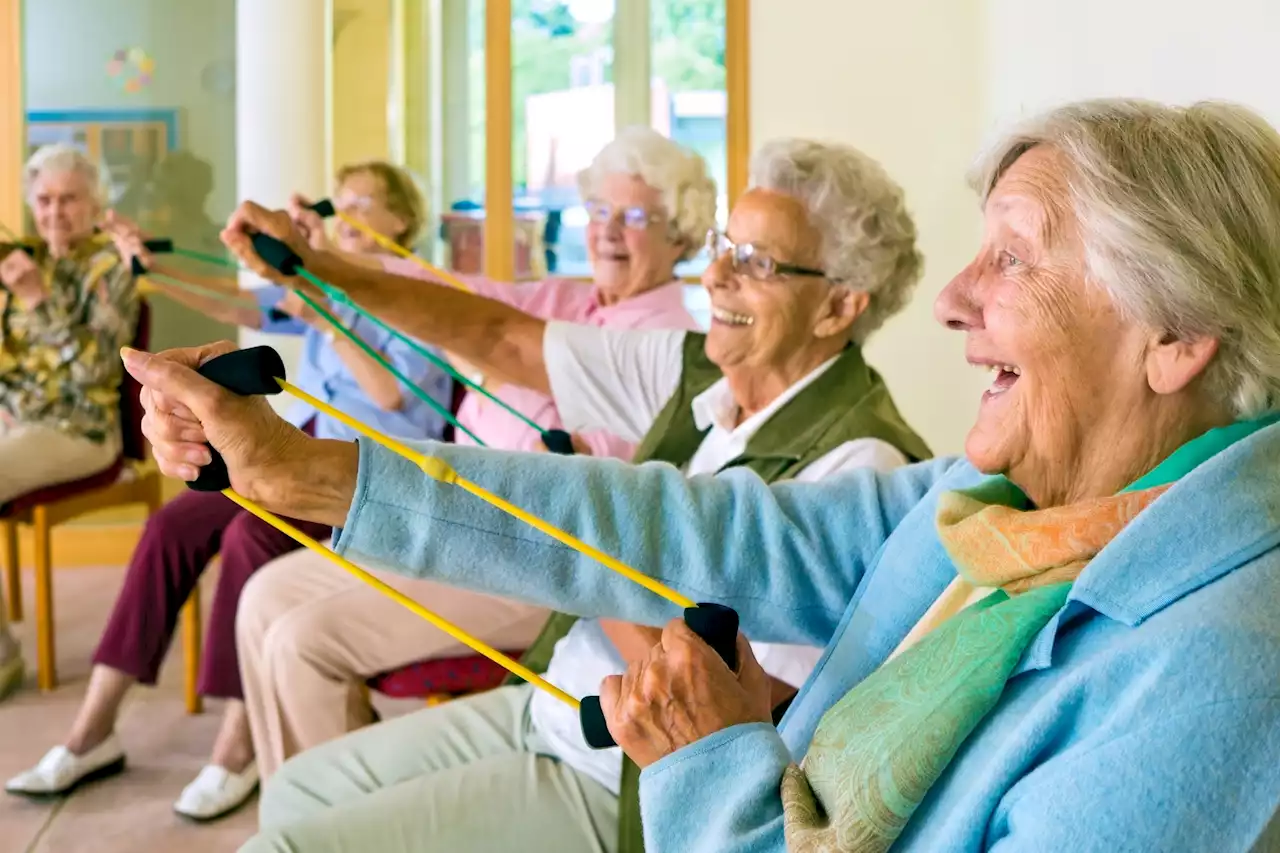Many overlook the warnings preceding workout classes that encourage consulting a doctor before participating in rigorous exercise. After all, isn't exercise good for you? However, certain conditions could make the increased heart rate, associated with exercise, dangerous.
Carotid arteries supply blood flow to facial tissues and the brain and are located on both sides of the neck. When fat, cholesterol, and other particles build up the inner carotid walls, they form a plaque that narrows the artery., and while it can be very difficult to detect early stages of plaque accumulation, stenosis is dangerous because it limits blood flow to the brain. Without the necessary blood, the brain lacks oxygen, and the patient experiences a stroke.
In healthy patients, an elevated heart rate increases and stabilizes the drag force blood exerts on the vessel wall, reducing stenosis risk. But for patients already experiencing stenosis, it may not be as beneficial. The authors used a specialized computational model to simulate blood flow in carotid arteries at three stages of stenosis: without blockage, with a mild 30% blockage, and with a moderate 50% blockage. They compared the effect of an exercise-induced heart rate, 140 beats per minute, and resting heart rates of 67 and 100 bpm.
As expected, for healthy and mild cases, the exercise condition improved the health of the simulated carotid. However, the results for moderate blockage were concerning. "Intense exercise shows adverse effects on patients with moderate or higher stenosis levels," said author Somnath Roy."It substantially increases the
Ireland Latest News, Ireland Headlines
Similar News:You can also read news stories similar to this one that we have collected from other news sources.
 Exercise holds the key to improved physical function in older adults in residential carePhysical activity helps counter age-related physical decline in older adults, but its impact on those in residential care with functional dependency, multimorbidity, and polypharmacy remains uncertain. Study examines the effects of exercise interventions on physical function in this population.
Exercise holds the key to improved physical function in older adults in residential carePhysical activity helps counter age-related physical decline in older adults, but its impact on those in residential care with functional dependency, multimorbidity, and polypharmacy remains uncertain. Study examines the effects of exercise interventions on physical function in this population.
Read more »
 Exercise is a viable intervention for improving depression and anxiety in young individuals, study findsExercise is a viable intervention for improving depression and anxiety in young individuals, study finds FrontPsychiatry exercise depression anxiety health research mentalhealth
Exercise is a viable intervention for improving depression and anxiety in young individuals, study findsExercise is a viable intervention for improving depression and anxiety in young individuals, study finds FrontPsychiatry exercise depression anxiety health research mentalhealth
Read more »
 Yoga can help stop cancer spreading or returning, according to new studyThe low impact exercise can help to limit the spread of cancer by reducing inflammation in the body, research suggests.
Yoga can help stop cancer spreading or returning, according to new studyThe low impact exercise can help to limit the spread of cancer by reducing inflammation in the body, research suggests.
Read more »
 Glasgow reporter 'badly beaten' after being held in Turkish detention centreSermad Al-Khafaji, 43, and fellow Scot, Alexandra Foreman, 34, tavelled to Turkey last month to film asylum seekers making their way into Bulgaria, however, they were detained.
Glasgow reporter 'badly beaten' after being held in Turkish detention centreSermad Al-Khafaji, 43, and fellow Scot, Alexandra Foreman, 34, tavelled to Turkey last month to film asylum seekers making their way into Bulgaria, however, they were detained.
Read more »
 A week with San Marino - the worst international football team in the worldSan Marino, a tiny European republic of less than 34,000 people, is winless in 129 straight matches. They're the worst national team in the world. But for their people, pride endures.
A week with San Marino - the worst international football team in the worldSan Marino, a tiny European republic of less than 34,000 people, is winless in 129 straight matches. They're the worst national team in the world. But for their people, pride endures.
Read more »
 Effects of laughter yoga on health-related quality of life in cancer patients undergoing chemotherapy: a randomized clinical trial - BMC Complementary Medicine and TherapiesBackground Chemotherapy is associated with a wide range of physical and psychological side effects, so complementary and alternative therapies may be practiced as an independent treatment or combined with the standard ones to improve health-related quality of life of cancer patients. Laughter yoga has predominantly been used as a complementary therapy to enhance health and wellbeing of ordinary people and patients with chronic diseases. However, to date, few studies have evaluated the effects of this modern exercise on cancer patients undergoing chemotherapy in clinical settings, to the best of the authors’ knowledge. the present study aimed to investigate the effects of Laughter Yoga on the health-related quality of life of cancer patients undergoing chemotherapy. Methods This study was a two-group randomized clinical trial on 69 cancer patients undergoing chemotherapy at Reza Radiotherapy and Oncology Center, Iran in 2018. Patients were randomly divided into intervention and control groups. The intervention group received laughter yoga for four sessions at one-week intervals. Each session consists of one part and lasts for 20–30 min. Patients’ health-related quality of life was assessed before and after the laughter yoga sessions using Quality of Life Questionnaire European Organization for Research and Treatment of Cancer (EORTC QLQ-C30) version 3.0. SPSS Statistics (v.20 software was used to conduct Chi-square, independent t-test, Mann-Whitney, Wilcoxon and paired t-tests analyses of the data. Results The number of participants in intervention and control groups were 34 and 35, there was no significant difference of demographic and disease related characteristics and pre-intervention HRQOL between two groups. In the intervention group, there is significant difference between pre- and post-intervention scores (Mean ± Standard Deviation) of emotional functioning (12.99 ± 10.49), physical functioning (0.78 ± 6.08), role functioning (3.43 ± 7.97), fatigue (-8.82 ± 2
Effects of laughter yoga on health-related quality of life in cancer patients undergoing chemotherapy: a randomized clinical trial - BMC Complementary Medicine and TherapiesBackground Chemotherapy is associated with a wide range of physical and psychological side effects, so complementary and alternative therapies may be practiced as an independent treatment or combined with the standard ones to improve health-related quality of life of cancer patients. Laughter yoga has predominantly been used as a complementary therapy to enhance health and wellbeing of ordinary people and patients with chronic diseases. However, to date, few studies have evaluated the effects of this modern exercise on cancer patients undergoing chemotherapy in clinical settings, to the best of the authors’ knowledge. the present study aimed to investigate the effects of Laughter Yoga on the health-related quality of life of cancer patients undergoing chemotherapy. Methods This study was a two-group randomized clinical trial on 69 cancer patients undergoing chemotherapy at Reza Radiotherapy and Oncology Center, Iran in 2018. Patients were randomly divided into intervention and control groups. The intervention group received laughter yoga for four sessions at one-week intervals. Each session consists of one part and lasts for 20–30 min. Patients’ health-related quality of life was assessed before and after the laughter yoga sessions using Quality of Life Questionnaire European Organization for Research and Treatment of Cancer (EORTC QLQ-C30) version 3.0. SPSS Statistics (v.20 software was used to conduct Chi-square, independent t-test, Mann-Whitney, Wilcoxon and paired t-tests analyses of the data. Results The number of participants in intervention and control groups were 34 and 35, there was no significant difference of demographic and disease related characteristics and pre-intervention HRQOL between two groups. In the intervention group, there is significant difference between pre- and post-intervention scores (Mean ± Standard Deviation) of emotional functioning (12.99 ± 10.49), physical functioning (0.78 ± 6.08), role functioning (3.43 ± 7.97), fatigue (-8.82 ± 2
Read more »
